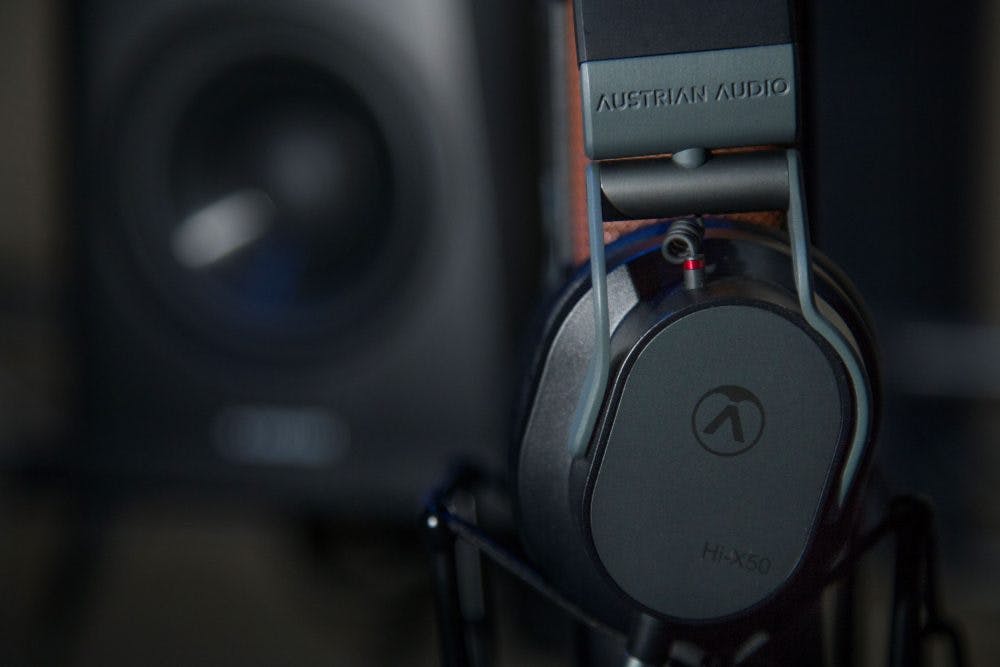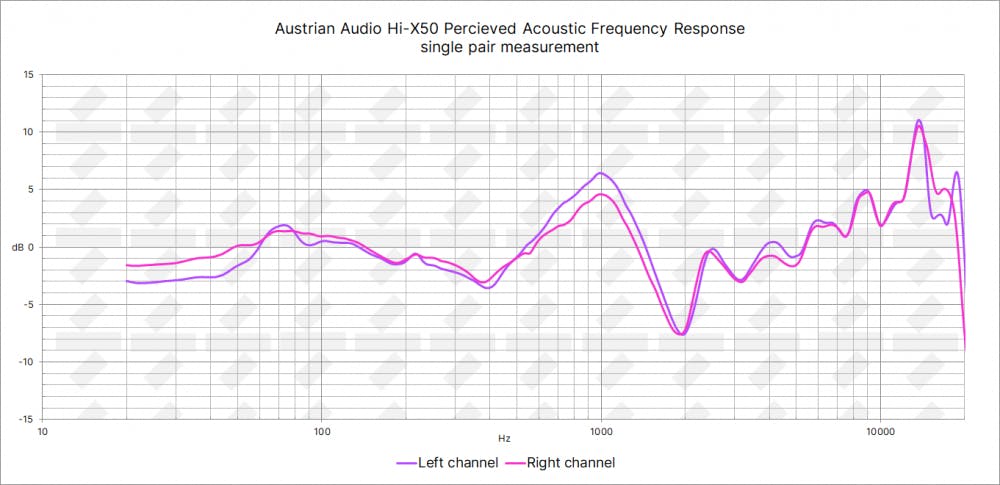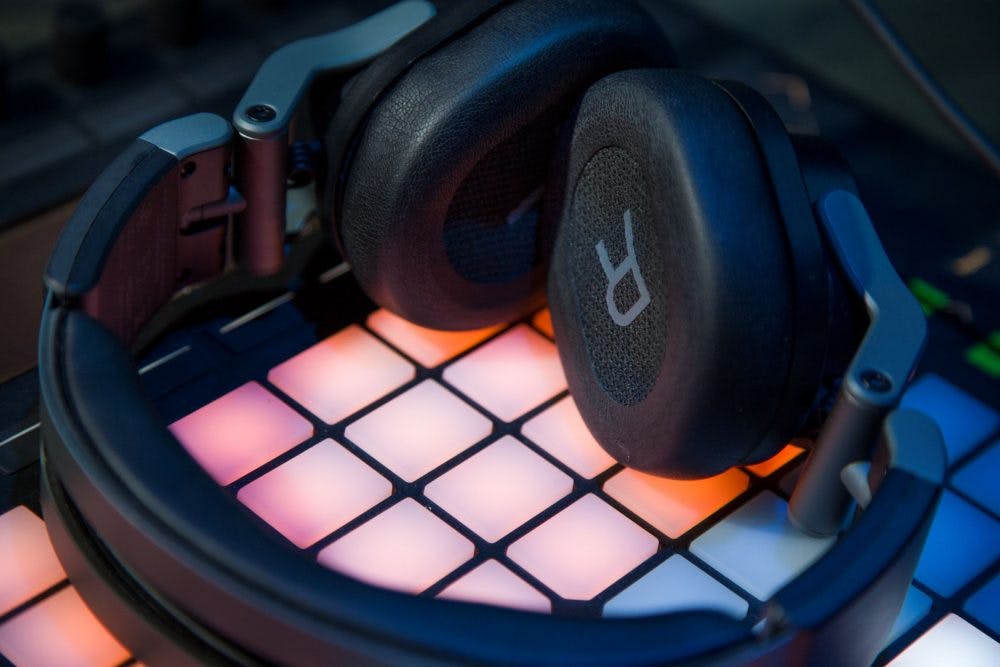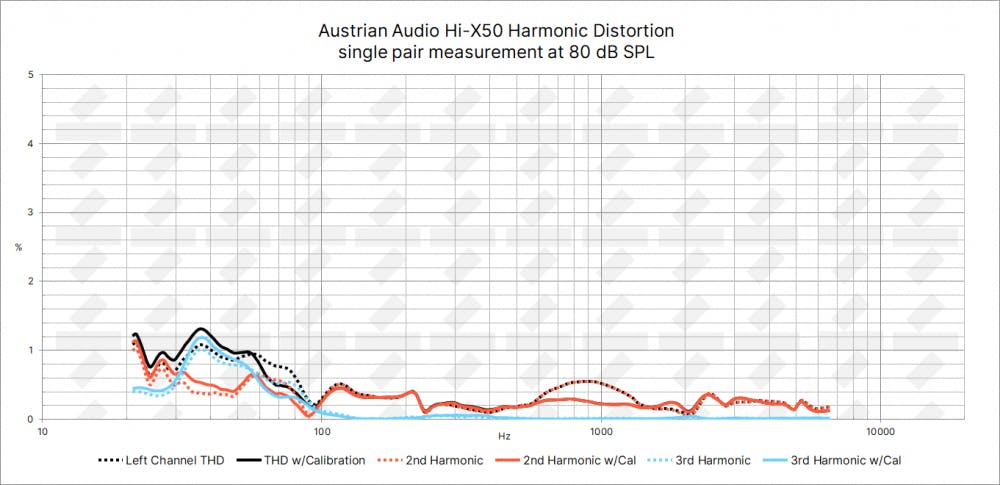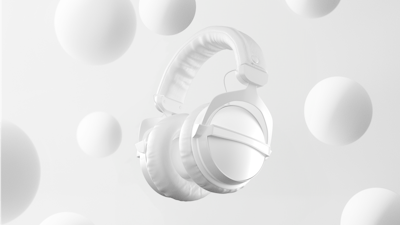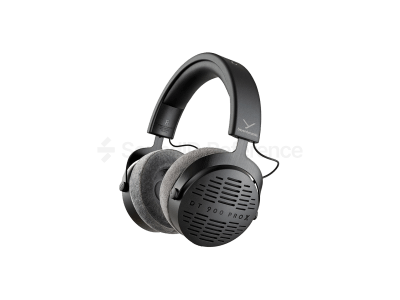While Austrian Audio is a very young company, it’s founded by ex AKG employees and is based on years of expertise in the field. The Hi-X50 is among the first models they brought to market and it has only a few (but strong) rivals in the premium on-ear category, such as ATH-M60x and the legendary Sennheiser HD 25. There’s not much room for error, if Austrian Audio wants the Hi-X50 to be on par or better than the competition, they need to get them right. So do they?
- Relatively good comfort for on-ear headphones
- High-quality build
- Plenty of volume from any device
Pros list with SoundID Reference calibration
- Neutral frequency response
- Quite expensive
- Unique mid frequency coloration
The low impedance and high sensitivity of Hi-X50 allow any device to drive these headphones effortlessly. Tablets, laptops, sound cards, synths – sufficient volume will be no issue.
Austrian Audio has certainly made an effort to develop a distinctive aesthetic for their headphone design, they look like nothing else. The initial impression once you first pick up Hi-X50 is great – the build feels very solid. You can handle the headphones and give them a little bend without any squeaking or crackling noises.
Most parts are plastic apart from the headband, hinges and temples that allow the earcups to fold for a smaller footprint when traveling. The earpads and headband cushion are wrapped in nice, gentle synthetic leather. Cable, ear pads, headband cushion – everything is easily replaceable, as it should be for all studio headphones in 2021, yet we’re still not there.
The only minor gripe with the build – the black plastic pieces at the base of the headband are quite prone to scratching. Also, it’s a shame that there’s no coiled cable offered by Austrian Audio, since the 3 meter long straight cable isn’t the most convenient choice in every scenario. There is, however, a 1.2 meter straight cable available as an aftermarket accessory.
Overall they feel nicer than other pro on-ear headphones.
On to the main question – how do they sound? The answer is remarkably well! The bass response is rewarded with superb low end extension and overall can be described as balanced, among the most neutral we ever measured. Also in the 2.5-7kHz range only relatively low magnitude peaks and dips can be found, usually closed back headphones struggle to remain neutral in this range and color the sound heavily, but it’s not the case with Hi-X50. While they are brighter than all of the premium on-ear competition, the high frequency boost remains quite conservative up to about 14kHz. In all of the previously discussed frequency ranges Hi-X50 performs better or on par with its rivals, yet the 500 – 2000Hz region that is usually smooth for most pro headphones, proves troublesome for the new Austrian Audio design. The 1kHz peak paired with 2kHz drop noticeably shifts the tone and character of the mix, adding color, unlike any other headphones. SoundID Reference restores the tone by flattening the mids, and taking care of the rest of the issues. With all these corrections combined the A/B difference is more profound than expected, even though Hi-X50 out of the box sound relatively neutral apart from the zigzag in the mids. Overall though Austrian Audio has done a good job!
Out of our sample pool, headphone channels were pretty evenly matched, with only a few narrow-band inconsistencies that shouldn’t cause much trouble. One pair though had bass tilted to one side by about 3dB, which is enough to noticeably shift the balance.
Half of our testers found them to be very comfortable even for longer periods, while the other half reported excessive pressure on the pinna that makes it hard to keep them on for 45 minutes without breaks. It’s no secret that for extended sessions on-ear headphones will never be as comfortable as a good over-ear pair, so the fact that half of the testers had no real issues with them is impressive.
Hi-X50s are more expensive than most of the competition, apart from Sennheiser HD 26 Pro. The price increase can be justified with the exceptional build, as in that regard they’re in a league of their own when compared to other on-ear headphones. The increased price is no surprise given the quality of the build and the fact that they’re manufactured in Austria.
THD figures stay low throughout the spectrum and although at about 40Hz the 3rd harmonic distortion creeps up higher than its rivals, listening tests showed no audible issues.
How accurate and consistent is the correction effect among different listeners?Adaptiveness is rather good, especially considering that for closed back on-ear headphones this is a common issue. There can be some differences in frequencies above 5kHz, but in most cases, they should be below +/-3 dB.
Even with the headband rails pushed all the way in, Hi-X50s remain relatively large, therefore the clamping force may be a bit weak for people with smaller heads, and this may lead to reduced bass response.
How much do they differ pair to pair in terms of frequency response?If we ignore the left to right inconsistency in the low end for that one pair, in the rest of the spectrum all pairs are remarkably similar, pretty much the same. That means that the model average calibration profile that’s bundled with SoundID Reference should be highly accurate.
Rating
Conclusion
Austrian Audio has entered the market with a very successful product. Hi-X50 may be one of the first models they released, but it’s already among the top headphones in the on-ear category. The sound out of the box is relatively neutral apart from the dips and peaks in the mid frequencies, which color the sound in a very unique, unnatural way. With that said, when it comes to frequency response, Hi-X50 rivals each have their own faults, but these can be remedied with SoundID Reference, thus leveling out the playing field. And in terms of build quality, they’re the best on-ear headphones yet. A strong debut for Austrian Audio.
Final Rating
Calibration Enabled
Calibration


